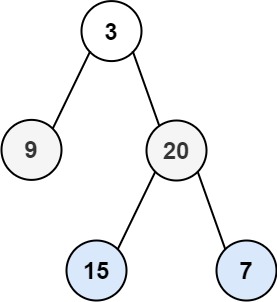1. Gas Station Circular Route Problem
There are n gas stations along a circular route, where the amount of gas at the ith station is gas[i].
You have a car with an unlimited gas tank and it costs cost[i] of gas to travel from the ith station to its next (i + 1)th station. You begin the journey with an empty tank at one of the gas stations.
Given two integer arrays gas and cost, return the starting gas station's index if you can travel around the circuit once in the clockwise direction, otherwise return -1. If there exists a solution, it is guaranteed to be unique
Example 1:
Input: gas = [1,2,3,4,5], cost = [3,4,5,1,2] Output: 3 Explanation: Start at station 3 (index 3) and fill up with 4 unit of gas. Your tank = 0 + 4 = 4 Travel to station 4. Your tank = 4 - 1 + 5 = 8 Travel to station 0. Your tank = 8 - 2 + 1 = 7 Travel to station 1. Your tank = 7 - 3 + 2 = 6 Travel to station 2. Your tank = 6 - 4 + 3 = 5 Travel to station 3. The cost is 5. Your gas is just enough to travel back to station 3. Therefore, return 3 as the starting index.
Example 2:
Input: gas = [2,3,4], cost = [3,4,3] Output: -1 Explanation: You can't start at station 0 or 1, as there is not enough gas to travel to the next station. Let's start at station 2 and fill up with 4 unit of gas. Your tank = 0 + 4 = 4 Travel to station 0. Your tank = 4 - 3 + 2 = 3 Travel to station 1. Your tank = 3 - 3 + 3 = 3 You cannot travel back to station 2, as it requires 4 unit of gas but you only have 3. Therefore, you can't travel around the circuit once no matter where you start.
Constraints:
- n == gas.length == cost.length
- 1 <= n <= 105
- 0 <= gas[i], cost[i] <= 104
2. Binary Tree Zigzag Level Order Traversal
Given the root of a binary tree, return the zigzag level order traversal of its nodes' values. (i.e., from left to right, then right to left for the next level and alternate between).
Example 1:

Input: root = [3,9,20,null,null,15,7] Output: [[3],[20,9],[15,7]]
Example 2:
Input: root = [1] Output: [[1]]
Example 3:
Input: root = [] Output: []
Constraints:
- The number of nodes in the tree is in the range [0, 2000].
- -100 <= Node.val <= 100
3. Find bug in code
for(int row=0;row<1024;row++){
if(row&3==0){
printf("blabla");
}
}
}
这段代码的用意是每4个数输出一个值。
找bug
if(row&3==0){
printf("blabla");
}
}
}
这段代码的用意是每4个数输出一个值。
找bug
4. Design snapshot tool
设计一个snapshot类,是三个接口: void add(int n); int makesnapshot(); bool exists(int n, int snapshotid)
5. Design and Implement a Frequency Stack Data Structure
Design a stack-like data structure to push elements to the stack and pop the most frequent element from the stack.
Implement the FreqStack class:
FreqStack() constructs an empty frequency stack.
void push(int val) pushes an integer val onto the top of the stack.
int pop() removes and returns the most frequent element in the stack.
If there is a tie for the most frequent element, the element closest to the stack's top is removed and returned.
Example 1:
Input
["FreqStack", "push", "push", "push", "push", "push", "push", "pop", "pop", "pop", "pop"]
[[], [5], [7], [5], [7], [4], [5], [], [], [], []]
Output
[null, null, null, null, null, null, null, 5, 7, 5, 4]
Explanation
FreqStack freqStack = new FreqStack();
freqStack.push(5); // The stack is [5]
freqStack.push(7); // The stack is [5,7]
freqStack.push(5); // The stack is [5,7,5]
freqStack.push(7); // The stack is [5,7,5,7]
freqStack.push(4); // The stack is [5,7,5,7,4]
freqStack.push(5); // The stack is [5,7,5,7,4,5]
freqStack.pop(); // return 5, as 5 is the most frequent. The stack becomes [5,7,5,7,4].
freqStack.pop(); // return 7, as 5 and 7 is the most frequent, but 7 is closest to the top. The stack becomes [5,7,5,4].
freqStack.pop(); // return 5, as 5 is the most frequent. The stack becomes [5,7,4].
freqStack.pop(); // return 4, as 4, 5 and 7 is the most frequent, but 4 is closest to the top. The stack becomes [5,7].
Constraints:
0 <= val <= 109
At most 2 * 104 calls will be made to push and pop.
It is guaranteed that there will be at least one element in the stack before calling pop.
Implement the FreqStack class:
FreqStack() constructs an empty frequency stack.
void push(int val) pushes an integer val onto the top of the stack.
int pop() removes and returns the most frequent element in the stack.
If there is a tie for the most frequent element, the element closest to the stack's top is removed and returned.
Example 1:
Input
["FreqStack", "push", "push", "push", "push", "push", "push", "pop", "pop", "pop", "pop"]
[[], [5], [7], [5], [7], [4], [5], [], [], [], []]
Output
[null, null, null, null, null, null, null, 5, 7, 5, 4]
Explanation
FreqStack freqStack = new FreqStack();
freqStack.push(5); // The stack is [5]
freqStack.push(7); // The stack is [5,7]
freqStack.push(5); // The stack is [5,7,5]
freqStack.push(7); // The stack is [5,7,5,7]
freqStack.push(4); // The stack is [5,7,5,7,4]
freqStack.push(5); // The stack is [5,7,5,7,4,5]
freqStack.pop(); // return 5, as 5 is the most frequent. The stack becomes [5,7,5,7,4].
freqStack.pop(); // return 7, as 5 and 7 is the most frequent, but 7 is closest to the top. The stack becomes [5,7,5,4].
freqStack.pop(); // return 5, as 5 is the most frequent. The stack becomes [5,7,4].
freqStack.pop(); // return 4, as 4, 5 and 7 is the most frequent, but 4 is closest to the top. The stack becomes [5,7].
Constraints:
0 <= val <= 109
At most 2 * 104 calls will be made to push and pop.
It is guaranteed that there will be at least one element in the stack before calling pop.


